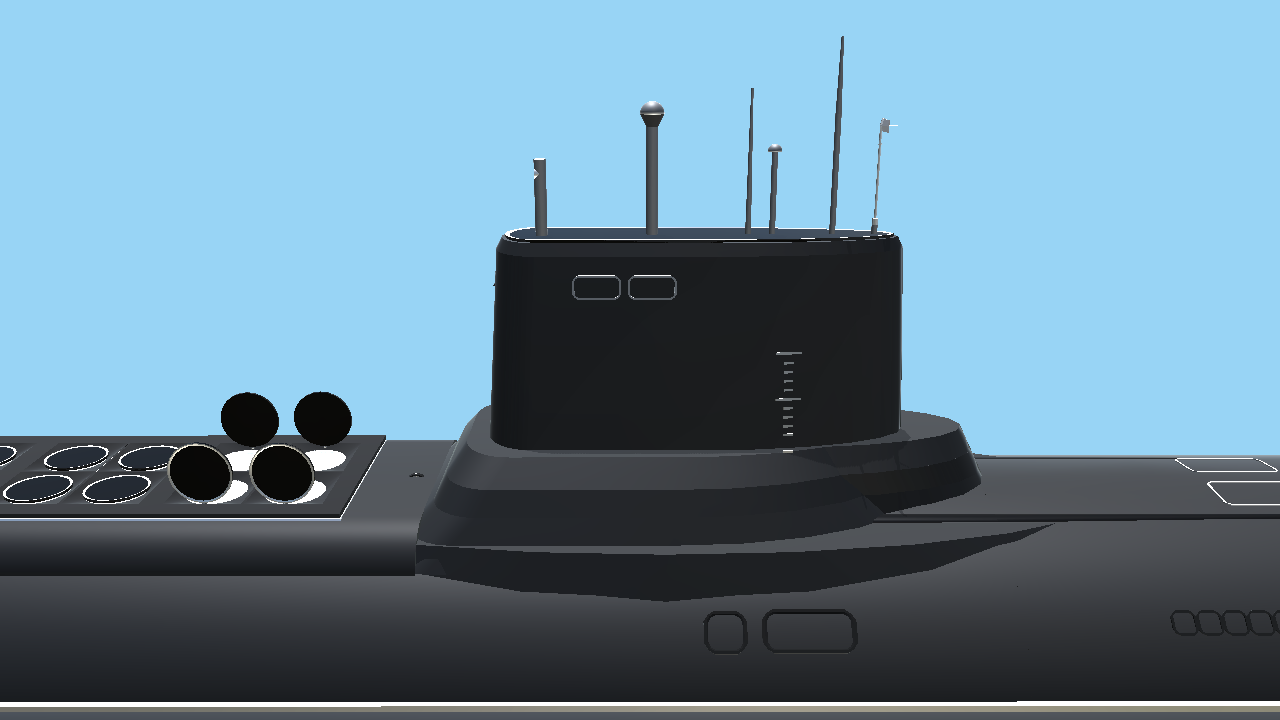

The double hull approach also saves space inside the pressure hull, as the ring stiffeners and longitudinals can be located between the hulls. water leakages, especialy at depth of when being depth charged. The light hull can be used to mount equipment, which if attached directly to the pressure hull could cause unnecessary stress, i.e. All Soviet heavy submarines are built with a double hull structure, or “casing”, but American submarines usually are single-hulled.ĭouble hull boats have an external hull which forms the actually areodynamic shape of submarine, sometimes called a casing or ‘light hull.’ The outer hull can be made of made of steel thatis only 2 to 4 millimeters thick steel since the pressure on both sides of the casing is the same.
#Typhoon class submarine vehicle simulator code#
Soviet Russia’s first military nuclear submarine was Project 627, known in the West by the NATO code of November class submarine. Right: USS Nautilus she was decommissioned in 1980 With atomic power the USS Nautilus could remain underwater for up to four months without resurfacing (displacement 3,520 tons length 320 ft speed 23 kts). The United States launched the world’s first military nuclear submarine, the USS Nautilus, in 1954.

It was in this era that serious consideration was given to how anatomic reactor could be ‘miniaturised’ to fit inside a submarine or a surface warship. 1945 onwards, the capabilities and huge amounts of power that could be unleashed indefinitely by harnessing atomic power for, say, electrify generation, became commonplace in the public’s mind. While some of the boats in the table above had to surface to fire their missiles, the diesel electric Golf class of submarines could fire while still submerged (see ). For instance, missing from the table is the Juliett class submarines which were commissioned from 1963 to 1994, or the advanced Kilo class first commissioned in 1980. The radiation accidents and fires on board nuclear powered Soviet submarines (mentioned above) may have lead to the retention and expansion of conventionally powered boats, i.e. The following table shows the chronological order in which nuclear powered Soviet submarines (SSN) became operational. Secondly they were capable of sinking enemy (America/ the West) warships in the conventional way with torpedoes or with short range missiles. A sub set of this role was the launching of nuclear tipped cruise type missies. Firstly they were a deterrent to the threatof American ICBM. Nuclear powered Soviet submarines had a variety of roles. Of the two powers,Russia appears to have had the most hazardous boats or the worse streak of bad luck. The Cold War superpowers, Russian and the US, suffered radiation leaks, fires and contamination among their nuclear submarines. The most serious drawback of which is radiation, leaks which occur from time to time, are invisible to the human senses and are often fatal. Yet for all that, in common with their hydrogen peroxide predecessors, they have severe weaknesses. Nuclear submarines stand at the pinnacle of ‘air-independent’ propulsion systems which has been the Holy Grail since submersibles were invented. The American short hand for nuclear powered submarines is ‘SSN’ where ‘SS’ stands for submarines and ‘N’ for nuclear. Once fuelled the current generations of nuclear submarines never need to be refueled for 25-year, which is usually their useful lifespan. Their only main limiting parameter is carrying enough food. They are self-sufficient in water production and breathable air.

speed, and endurance, and are able to remain submerged almost indefinitely. They offer advantages in performance, i.e. Submarine powered by a nuclear reactor are called ‘nuclear submarines’.


 0 kommentar(er)
0 kommentar(er)
